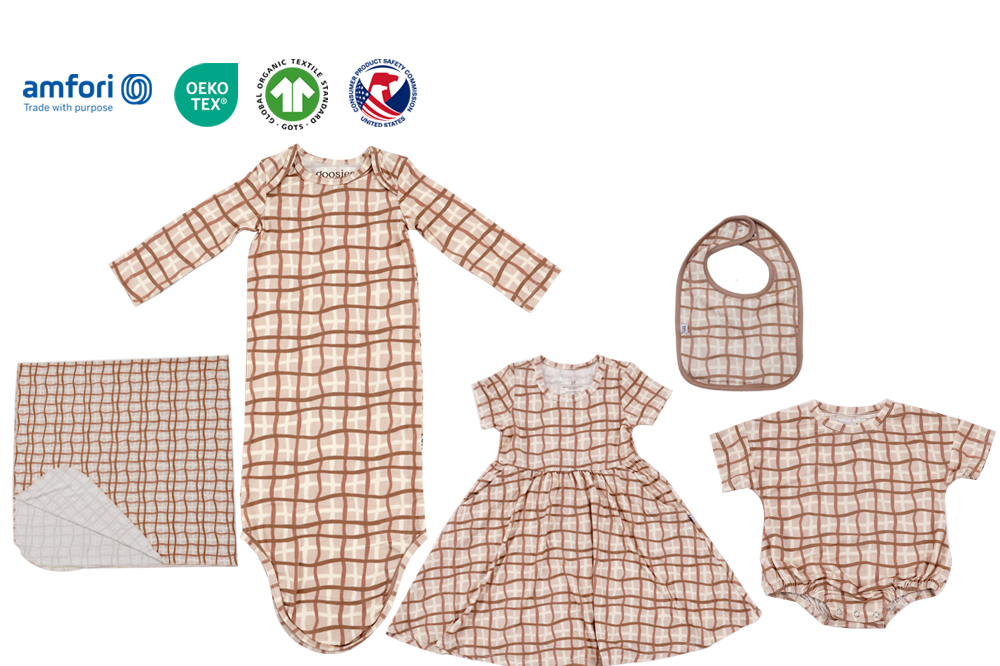In the rapidly evolving world of baby clothing manufacturing, sustainability is more than just a buzzword—it's a necessity. As consumer awareness grows and environmental challenges become more urgent, manufacturers, especially in the baby clothing sector, are turning to sustainable practices to meet the demand for eco-friendly products. This behind-the-scenes look at sustainable baby clothing manufacturing will explore the methods and materials used, giving insight into how brands, strive to be environmentally responsible while producing high-quality garments.

1.Introduction to Sustainable Baby Clothing Manufacturing
1.1Overview of the Baby Clothing Industry and Sustainability
Sustainability in the baby clothing industry is all about minimizing environmental impact while ensuring that clothing is safe and comfortable for babies. The rise of eco-conscious consumers has significantly influenced this sector, pushing brands to rethink how they source materials and manufacture products.
1.2 Why Sustainability Matters in Baby Clothing Production?
Babies have sensitive skin, and ensuring their clothes are free from harmful chemicals is essential.every effort is made to prioritize health and safety. Beyond this, sustainability addresses the global need to reduce waste, conserve natural resources, and create a safer world for future generations.
1.3 Key Challenges in Sustainable Baby Clothing Manufacturing
The major challenges in achieving sustainability in baby clothing production include the cost of eco-friendly materials, maintaining high production quality, and meeting regulatory standards. However, innovations in the industry are helping overcome these barriers, making sustainable options more accessible.
2.Sustainable Raw Materials Used in Baby Clothing
2.1 Organic Cotton: The Backbone of Sustainable Baby Clothes
Organic cotton is one of the most common materials used in sustainable baby clothing. It's grown without harmful pesticides, making it safer for both the environment and babies. Organic cotton is soft, breathable, and durable, making it an ideal choice for sensitive baby skin.
2.2 Bamboo Fibers: Eco-Friendly and Comfortable
Bamboo is another eco-friendly fabric that has gained popularity in sustainable baby clothing. It’s highly renewable, grows quickly, and requires minimal water and pesticides. Clothing made from bamboo fibers is soft, hypoallergenic, and has natural moisture-wicking properties, which is perfect for active infants.
2.3 Hemp: A Durable and Sustainable Fabric Option
Hemp is a strong, durable material that is resistant to mold and UV rays. Hemp’s cultivation requires less water than cotton, making it an excellent sustainable alternative. Baby clothing made from hemp is also naturally antibacterial and biodegradable.
2.4 Tencel: The New Age Sustainable Fabric
Tencel, made from wood pulp, is a relatively new addition to the sustainable fabric world. It’s produced in a closed-loop process, meaning the chemicals used in its production are recycled. This makes it an eco-friendly option for baby clothes, as it’s gentle on the environment and soft on a baby’s skin.
3. The Manufacturing Process: A Focus on Sustainability
3.1 Eco-Friendly Manufacturing Processes
Sustainable manufacturing is all about minimizing waste and reducing energy consumption. we use processes that limit pollution and resource depletion. This includes using energy-efficient machines and eco-friendly dyes.
3.2 Reducing Waste in Baby Clothing Production
Waste reduction in the manufacturing process is critical. Implementing practices like recycling fabric scraps and reducing water usage are key steps towards achieving zero-waste production.
3.3 Water Conservation Techniques
Water conservation is a crucial aspect of sustainable baby clothing manufacturing. Techniques such as closed-loop systems and water recycling help reduce the water footprint of clothing production.
3.4 Energy-Efficient Manufacturing Practices
By investing in energy-efficient technology and renewable energy sources, the carbon footprint of manufacturing can be significantly reduced. Factories that incorporate solar or wind energy contribute to more sustainable production practices.
4. Ethical Labor Practices in Sustainable Manufacturing
4.1 The Importance of Fair Wages and Safe Working Conditions
Ensuring ethical labor practices is as important as using eco-friendly materials. Sustainable baby clothing manufacturers must provide fair wages and safe working conditions to all employees, ensuring that the workers who create these garments are treated with respect.
4.2 Supporting Local Communities
Many sustainable baby clothing manufacturers work with local artisans and farmers, supporting their communities and fostering long-term partnerships. This helps sustain not only the environment but also local economies.
4.3 The Role of Certifications in Ethical Manufacturing
Certifications like Fair Trade and Global Organic Textile Standard (GOTS) are essential in verifying that a company’s practices are truly ethical and sustainable. These certifications provide transparency and build trust with consumers.
5. Packaging and Distribution: Reducing Environmental Impact
5.1 Sustainable Packaging Options for Baby Clothing
Sustainable packaging is an important part of the eco-friendly manufacturing process. Biodegradable, recyclable, and compostable packaging options help reduce the environmental impact of shipping products.
5.2 Reducing Carbon Footprint in Distribution
Transporting baby clothing products in a sustainable manner involves optimizing shipping methods, reducing packaging size, and choosing carbon-neutral delivery options.
5.3 The Future of Sustainable Packaging in Baby Clothing
Looking ahead, innovations such as reusable packaging and plant-based packaging materials will continue to reduce the environmental footprint of baby clothing.
FAQs
What materials are used in sustainable baby clothing?
Sustainable baby clothing is often made from organic cotton, bamboo, hemp, and Tencel, which are eco-friendly and gentle on baby skin.
Why is sustainable baby clothing better for the environment?
Sustainable baby clothing uses fewer resources, reduces waste, and eliminates harmful chemicals, making it better for both babies and the planet.
How do manufacturers ensure ethical labor practices?
Ethical labor practices include paying fair wages, providing safe working conditions, and obtaining certifications like Fair Trade.
Can sustainable baby clothing be as durable as traditional clothing?
Yes, sustainable materials like hemp and organic cotton are known for their durability and longevity, making them a reliable choice.
What role does packaging play in sustainability?
Sustainable packaging reduces waste and environmental impact by using biodegradable and recyclable materials.
Is sustainable baby clothing more expensive?
While sustainable baby clothing may have a higher upfront cost, its durability and eco-friendly benefits provide long-term value.